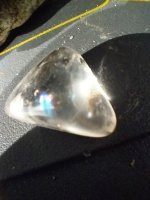Red_desert
Gold Member
- Feb 21, 2008
- 6,869
- 3,521
- Detector(s) used
- Garrett Ace 250/GTA 1,000; Fisher Gold Bug-2; Gemini-3; Unique Design L-Rods
- Primary Interest:
- All Treasure Hunting
The artifact suddenly becomes more significant. Anointing of olive oil predates Christianity and it was used in the Hebrew's ceremony to anoint kings, such as king David. Perhaps the tradition in the Middle East goes back 3,000+ years BC. In New Testament times, olive oil was used to anoint the sick for prayers.






 Great Job!
Great Job! 



